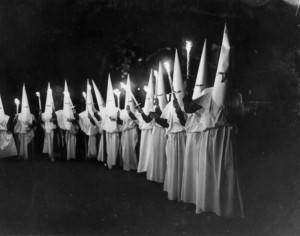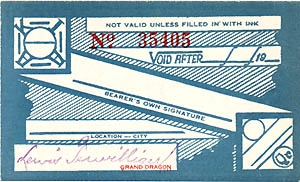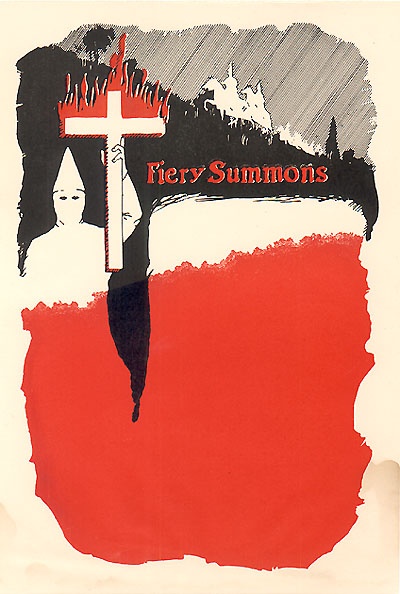The Origins of the KKK
I have always been fascinated by the Ku Klux Klan (KKK) and several years ago I started collecting artifacts here and there. I first became aware of the KKK when I was around 11 years old and watched a documentary about the organization on TV.
There are a number of myths about the origins of the KKK. Some people believe that it was launched by Confederate prisoners during the Civil War. Others think that it was a secret order of Chinese opium smugglers. In reality, the Klan began when a group of six former Confederate soldiers decided to start a social club in December 1865 in Pulaski, Tennessee. They decided that it would be a secret society and established titles for the various officers. They chose names that were purposely ridiculous, for example calling the head of the group the Grand Cyclops and his assistant, the Grand Magi. The members would be called Ghouls. Even the name of the social club, Ku Klux Klan was meant to be intentionally unusual and somewhat mysterious.
The club was actually originally founded out of boredom. Historians disagree about the motivations of the founders. Their first stunts involved disguising themselves in sheets and riding around on their horses in the streets of Pulaski showing off. They added masks and tall pointed hats to their costumes.
It was in 1866 that the KKK realized that it might have the power to terrify local black people. The presence of armed white men on horses riding at night, rightly, reminded many black people of slave patrols. When the club added members from other towns, it discovered that they could intimidate black people during night rides dressed in their sheets, masks, and tall pointy hats. The KKK was transformed into a terrorist organization.
 It was not accidental that the early members of the Klan chose to wear white sheets. The origins of this costume can be found in slavery. In the book Night Riders in Black Folk History, Gladys-Marie Fry shares a story that was recounted to her by a black resident of Washington D.C. who had heard it from his ex-slave ancestors:
It was not accidental that the early members of the Klan chose to wear white sheets. The origins of this costume can be found in slavery. In the book Night Riders in Black Folk History, Gladys-Marie Fry shares a story that was recounted to her by a black resident of Washington D.C. who had heard it from his ex-slave ancestors:
“Back in those days they had little log cabins built around in a circle, around for the slaves. And the log cabins, they dabbed between two logs, they dabbed it with some mortar. And of course when that fall out, you could look out and see. But every, most every night about eight or nine o’clock this overseer would get on his white horse and put a sheet over him, and put tin cans to a rope and drag it around. And they told all the slaves. ‘Now if you poke your head out doors after a certain time, monster of a ghost will get you.’ They peeped through and see that and never go out. They didn’t have to have guards.”
Fry makes the case in the book that these disguises were intended to scare slaves and to exert social control. It isn’t surprising that the first Klansmen would adopt this uniform and add their own embellishments to it. They were playing on blacks’ beliefs about the supernatural which would have had its roots in African religions.
Interestingly by the end of 1869, the Klan had disbanded. This did not end the violence that black people were subjected to in the South.The Klan was reborn in the early 20th century mostly due to the large influx of new immigrants to the U.S. and the start of World War I. William J. Simmons, a methodist preacher and salesman, relaunched the KKK in 1915. A major purpose of Simmons’ was to make some money. He rebranded the Klan to make it explicitly anti-black, anti-Jewish and vociferously “Pro-American” (as they defined it). By late summer 1921, the KKK had over 100,000 members across the U.S. Members enrolled at $10 per person. The profits were significant because the “benevolent” society was tax-exempt. The Klan became big business and it would never again disband.
For those who are interested in the history of the Klan, I particularly like White Terror by Allen Trelease (1979). I don’t know if it is still in print but it is worth checking out from your local library if available.


